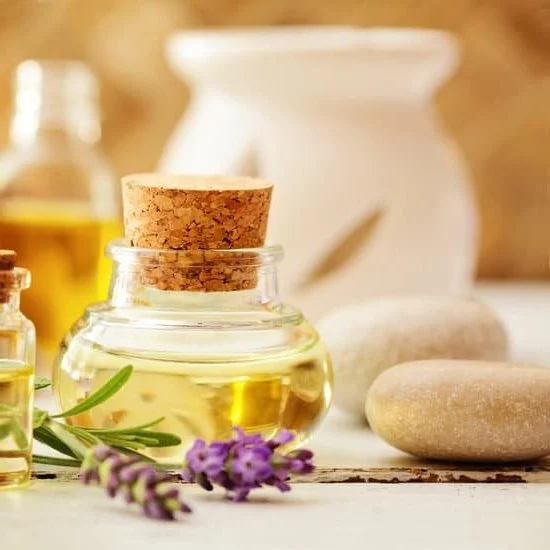Are you interested in learning how to make rosemary oil for aromatherapy? Aromatherapy has been used for centuries as a holistic healing treatment, harnessing the power of essential oils to promote physical and mental well-being.
One such essential oil is rosemary oil, which is known for its healing properties and invigorating scent. In this article, we will explore the benefits of aromatherapy, understand the healing properties of rosemary oil, and provide a step-by-step guide for making and using rosemary oil at home.
Aromatherapy is a therapeutic practice that uses natural plant extracts to promote health and well-being. It has been used for various purposes, including pain relief, improved sleep, and reduced anxiety. The use of aromatherapy can have a positive impact on both physical and emotional health, making it a popular alternative healing method.
One essential oil that is widely used in aromatherapy is rosemary oil. Derived from the aromatic herb Rosemarinus officinalis, rosemary oil is known for its stimulating and invigorating properties. It has been used for centuries in traditional medicine to improve cognitive function, relieve stress, and boost circulation. Understanding the healing properties of rosemary oil is essential for harnessing its full potential in aromatherapy practices.
Understanding the Healing Properties of Rosemary Oil
Rosemary oil is widely known for its numerous healing properties and has been used in aromatherapy for centuries. The oil is derived from the leaves of the rosemary plant through a process called steam distillation. Once extracted, the oil contains powerful compounds such as cineole, camphor, and pinene, which contribute to its therapeutic benefits.
One of the most notable healing properties of rosemary oil is its ability to improve cognitive function and concentration. The oil is often used in aromatherapy to enhance mental clarity and alertness, making it an excellent choice for promoting focus and productivity. Additionally, rosemary oil has anti-inflammatory and analgesic properties that make it effective in relieving pain and discomfort when used topically.
Moreover, rosemary oil is also believed to have positive effects on the respiratory system. When inhaled, the oil can help alleviate symptoms of respiratory conditions such as asthma, bronchitis, and sinusitis. Its antimicrobial properties can also aid in fighting off infections and boosting the immune system. These benefits make rosemary oil a valuable addition to any aromatherapy practice.
| Healing Properties | Benefits |
|---|---|
| Improves cognitive function | Enhances mental clarity and focus |
| Anti-inflammatory and analgesic | Relieves pain and discomfort |
| Positive effects on respiratory system | Alleviates symptoms of respiratory conditions |
Gathering the Necessary Supplies for Making Rosemary Oil
When it comes to making rosemary oil for aromatherapy, it’s important to gather the necessary supplies to ensure that the process goes smoothly and you end up with a high-quality product. The good news is that most of the supplies needed are likely already in your kitchen or can easily be found at your local grocery store or health food store.
Supplies Needed
To make rosemary oil, you will need the following supplies:
- Fresh rosemary leaves
- Carrier oil (such as olive oil or grapeseed oil)
- A clean, airtight glass jar
- Cheesecloth or fine mesh strainer
- Dark glass bottle for storing the finished oil
Choosing Quality Ingredients
When gathering your supplies, it’s important to choose high-quality ingredients. Look for fresh rosemary leaves that are free from any browning or wilting. Additionally, opt for a carrier oil that is pure and preferably organic. Using quality ingredients will ensure that your rosemary oil is potent and effective for aromatherapy use.
Where to Find Supplies
Fresh rosemary leaves can often be found at grocery stores, farmer’s markets, or even grown in your own garden. Carrier oils can typically be found at health food stores, specialty grocery stores, or online retailers. When selecting a glass jar and dark glass bottle for storing the finished oil, consider reusing containers you already have on hand or purchasing them from a kitchen supply store.
Step-by-Step Guide to Making Rosemary Oil at Home
Making rosemary oil at home for aromatherapy is a simple and rewarding process. The oil is known for its soothing and invigorating properties, making it a popular choice for aromatherapy enthusiasts. Here’s a step-by-step guide on how to make your own rosemary oil at home.
First, gather the necessary supplies. You will need fresh rosemary sprigs, carrier oil (such as olive or jojoba oil), a clean glass jar with a tight-fitting lid, and a double boiler or slow cooker.
Next, prepare the rosemary sprigs by washing and drying them thoroughly. Bruise the rosemary sprigs to release their essential oils. Place the bruised sprigs in the glass jar and cover them with the carrier oil.
Once the jar is filled with the rosemary and carrier oil, place it in a double boiler or slow cooker with water. Heat it on low for 3-4 hours to allow the oils to infuse. After this time, remove the jar from heat and let it cool before straining out the rosemary leaves.
After straining, transfer the infused oil into a clean glass jar and store it in a cool, dark place. Your homemade rosemary oil is now ready to use for aromatherapy purposes.
| Supplies | Instructions |
|---|---|
| Fresh Rosemary Sprigs | Wash and dry thoroughly |
| Carrier Oil (e.g. olive or jojoba) | Cover bruised rosemary sprigs |
| Glass Jar with Tight-Fitting Lid | Infuse mixture in double boiler or slow cooker |
Tips for Storing and Using Rosemary Oil
Rosemary oil, derived from the aromatic herb known for its culinary and medicinal uses, is a popular choice for aromatherapy due to its numerous benefits. Once you have mastered the art of making rosemary oil at home, it is essential to know how to store and use it properly to maintain its potency and safety. Here are some tips for storing and using rosemary oil for aromatherapy:
- Store in a dark glass bottle: To preserve the quality of rosemary oil, it is crucial to store it in a dark glass bottle, preferably amber or cobalt blue. This will protect it from light exposure, which can cause the oil to deteriorate.
- Keep in a cool, dark place: Rosemary oil should be stored in a cool, dark place away from direct sunlight and heat sources. A cabinet or drawer in a room temperature environment is an ideal storage location.
- Dilute before use: Rosemary oil is highly concentrated and should always be diluted with a carrier oil before applying it to the skin during aromatherapy massage or topical application. The recommended dilution ratio is 2-3 drops of rosemary oil per teaspoon of carrier oil.
- Use caution if pregnant or breastfeeding: Pregnant or breastfeeding women should use rosemary oil with caution as it may stimulate menstrual flow and could potentially cause complications during pregnancy.
Incorporating these tips into your storage and usage practices will ensure that you are able to fully harness the power of rosemary oil for aromatherapy while maintaining safety and effectiveness. Remember that essential oils are potent substances that require proper handling and care for optimal results.
Safety Precautions and Risks to Consider
When creating your own rosemary oil for aromatherapy, it is essential to be aware of the potential risks and safety precautions associated with handling essential oils. While rosemary oil offers numerous benefits and therapeutic properties, it is important to use it with caution to avoid any adverse effects.
Dilution and Sensitivity
Before using rosemary oil on your skin or in aromatherapy practices, it is crucial to dilute the essential oil with a carrier oil such as coconut or almond oil. Undiluted essential oils can cause skin irritation, allergic reactions, or sensitivity. It is recommended to perform a patch test on a small area of skin before using the diluted rosemary oil extensively.
Interaction With Medications
Individuals taking medications should consult with a healthcare professional before incorporating rosemary oil into their wellness routine. Some essential oils, including rosemary oil, may interact with certain medications and potentially affect their effectiveness. It is essential to understand how the use of essential oils may impact any prescribed medications one may be taking.
Safety Precautions for Inhalation
When utilizing rosemary oil for aromatherapy through inhalation, it is important to exercise caution. Prolonged exposure to concentrated essential oils may lead to respiratory issues or allergic reactions in some individuals. To minimize the risk of adverse effects, it is crucial to use the recommended amount of diluted rosemary oil in diffusers or inhalation practices.
By being mindful of these safety precautions and risks associated with using rosemary oil for aromatherapy, individuals can safely harness its therapeutic benefits without compromising their well-being.
Incorporating Rosemary Oil in Aromatherapy Practices
Aromatherapy is the practice of using essential oils to promote physical and psychological well-being. Essential oils, such as rosemary oil, are extracted from various plant materials and have been used for centuries for their therapeutic benefits. Incorporating rosemary oil into aromatherapy practices can provide a range of health benefits, including improved mental clarity, stress relief, and respiratory support.
One of the most common ways to use rosemary oil in aromatherapy is through diffusion. The oil can be diffused using a variety of methods, such as through an electronic diffuser or by adding a few drops to a bowl of hot water. This allows the aroma of the oil to fill the air, creating a calming and uplifting atmosphere. Additionally, rosemary oil can also be added to massage oils or bath products for a relaxing experience.
When using rosemary oil for aromatherapy purposes, it is important to consider any potential safety precautions and risks. Some individuals may be sensitive or allergic to certain essential oils, so it is recommended to perform a patch test before using rosemary oil topically. In addition, pregnant women, children, and individuals with certain medical conditions should consult with a healthcare professional before using rosemary oil in aromatherapy.
Incorporating rosemary oil into your aromatherapy practices can enhance your overall well-being and contribute to a healthier lifestyle. Whether used for its invigorating scent or its therapeutic properties, this versatile essential oil can be a valuable addition to your self-care routine. By following proper guidelines on usage and safety precautions, you can harness the power of rosemary oil for aromatherapy in a safe and effective manner.
Conclusion
In conclusion, harnessing the power of rosemary oil for aromatherapy can be a fulfilling and beneficial practice. Aromatherapy, with its long list of potential benefits such as stress relief, improved mental clarity, and mood enhancement, continues to gain popularity as a natural healing method. Utilizing rosemary oil in aromatherapy can enhance these benefits even further due to its unique healing properties.
Understanding the healing properties of rosemary oil allows individuals to fully appreciate its potential when incorporated into their aromatherapy practices. This essential oil has been known for its ability to improve cognitive function, ease stress and anxiety, and promote overall well-being. By learning how to make rosemary oil for aromatherapy at home, individuals can take advantage of these therapeutic benefits in a cost-effective manner.
When it comes to incorporating rosemary oil into aromatherapy practices, it is important to remember safety precautions and risks. While generally safe when used properly, it is crucial to dilute the oil before applying it topically and to be mindful of any allergies or sensitivities. With these considerations in mind, individuals can confidently incorporate rosemary oil into their aromatherapy routines and experience the many potential benefits it has to offer.
Frequently Asked Questions
How Do You Make Rosemary Essential Oil for Aromatherapy?
Rosemary essential oil for aromatherapy can be made by steam distillation of the rosemary plant. The process involves heating the plant material to release the aromatic compounds, which are then captured through condensation.
How Do You Make 100% Pure Rosemary Oil?
To make 100% pure rosemary oil, it is important to start with high-quality rosemary leaves and use a careful distillation process. Ensuring that no additives or synthetic ingredients are used will result in a pure product.
How Do They Extract Essential Oils From Rosemary?
Essential oils from rosemary are typically extracted through steam distillation or cold pressing. Steam distillation involves passing steam through the plant material to collect the essential oil, while cold pressing is mainly used for citrus oils by applying pressure to the fruit rinds.
Both methods ensure the purity and quality of the extracted oils for various uses such as aromatherapy and skincare.

Are you looking for a natural way to improve your health and wellbeing?
If so, aromatherapy may be the answer for you.





